-
The history of Porayar Nadar Estate – A story that dates back to 1790 AD
In 1790, Perumalsamy Nadar, along with his wife Esakkiammal leaves his village Seenathoppu (Thoothukudi District) leaving behind his house and properties over a dispute with his brothers.
They stayed in Porto Novo (then a major port, now called as Parangipettai in Cuddalore district) for a few months and in search of better opportunities they went to Tranquebar (Modern day Tharangampadi was a Danish region. During the Danish rule that lasted more than 200 years, Tranquebar had a strong global trade economy, and attracted merchants, administrators, soldiers, and missionaries from Denmark, Norway, and other places in faraway Europe along with local Indian dyers and weavers).
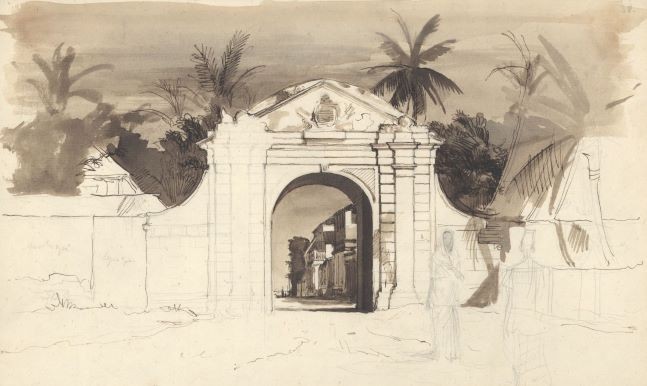
Perumalsamy Nadar found a place to live in Porayar, a suburb of Tranquebar, opposite the Bruke’s Garden. In 1791, the couple was blessed with a son, Vellaiyan (patriarch of the Nadar estate family). When Vellaiyan was 11 years old, he worked as a guard in local toddy* tapping palm grove.
*Toddy, known as kallu in Tamil, is a mild alcoholic beverage made from the sap of palm and coconut trees.
By the age of 16, Vellaiyan Nadar had gained a good knowledge of toddy trade, with the little money he saved from his job, he decided to open a toddy shop.
He did not have sufficient money to lease a palm grove for toddy tapping, so he approached the houses and bungalows of Danish officials, asked for permission to use the palm trees in their garden for toddy tapping. Many of them rented out their trees for Vellaiyan.
The toddy shop was generating good income, within a few years, he started several toddy shops across the Tranquebar region. Simultaneously, he bought several palm groves and cultivated toddy in them.
Meanwhile, a Dutch widow who held the licence (known as ainthu kaala kuthagai in Tamil) from Danish East India company to manufacture and supply arrack liquor* for the Tranquebar region for 5 years, got herself greatly into debt, auctioned her arrack supply contract to clear the debts. Vellaiyan Nadar acquired the licence from her and started to manufacture liquor from Porayar for Tranquebar region and made a fortune.
*Arrack is a distilled, stronger alcoholic drink
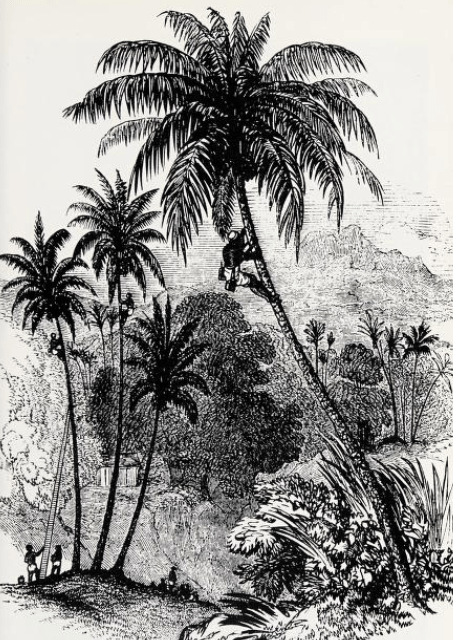
In British India, the distiller is usually given a monopoly for a term of 3 years, at rates determined by competition to supply liquor in a region.
In 1830, Vellaiya Nadar won the tender and became liquor distributor (known as abkari contractor) for Tanjore district. Such trades, since it was a monopoly, offer a lucrative source of income to anybody, no matter what his financial standing. [1]
Meanwhile, Vellaiya Nadar was blessed with a son, he was named Thavasumuthu. From the age of 14, Vellaiyan Nadar’s son Thavasumuthu Nadar accompanied his father and gained knowledge of the trade.
Thavasumuthu Nadar was a visionary, he sought to expand his liquor business throughout South India.
He travelled a lot, made friends with the various Kings and district collectors. He bought bungalows in Madras and organized social gatherings and expanded his contacts with high ranking British officials.
Moreover, the offices of government in the towns were the sources of lucrative patronage, attachment to which could make the fortune of anybody in a very short time.
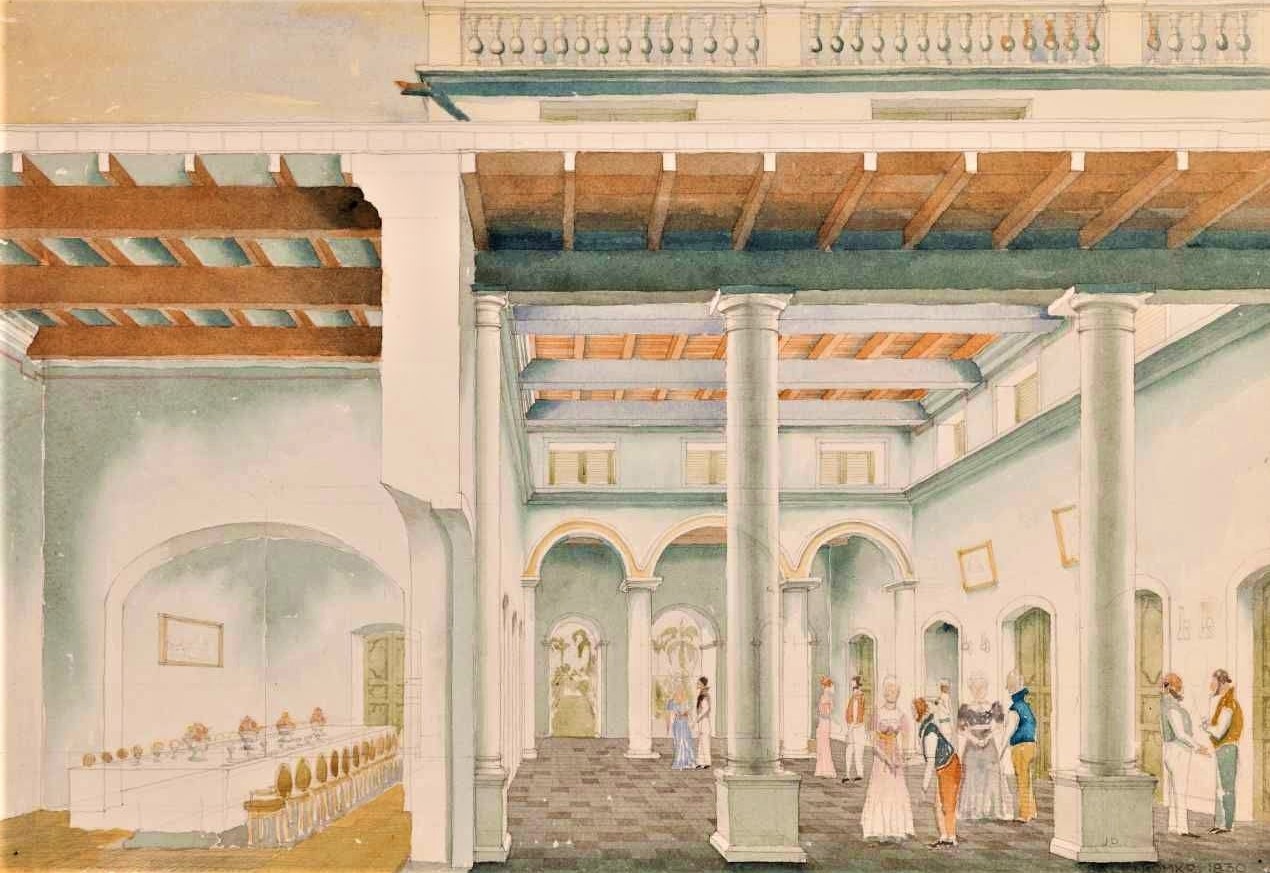
He acquired rights to supply alcohol for Madurai district, then for Tirunelveli district and Ramnad. He built a huge distillery in Thachanallur with the capacity to manufacture liquor for the three districts.
Obviously, the expansion of trade provided some more openings for the Nadar. Within a few years, he acquired rights to manufacture and supply alcohol for a greater portion of South India. [2]
Simultaneously, Thavsumuthu Nadar ventured into agriculture, he owned thousands of acres of agricultural lands across Tanjore district.
He bought several villages including Karapidagai, Arundavapuram, Ulagamadevi, Kildangal, Melamaruthur, Keelkudi, and thousands of acres land in Nalladai, Arasur, Ammapettai, Nagaipattinam, Poraiyar. [3]
Thavsumuthu Nadar’s estate covered a total area of 7000 acres, since then, his family was referred to as “Nadar Estate” by the people.
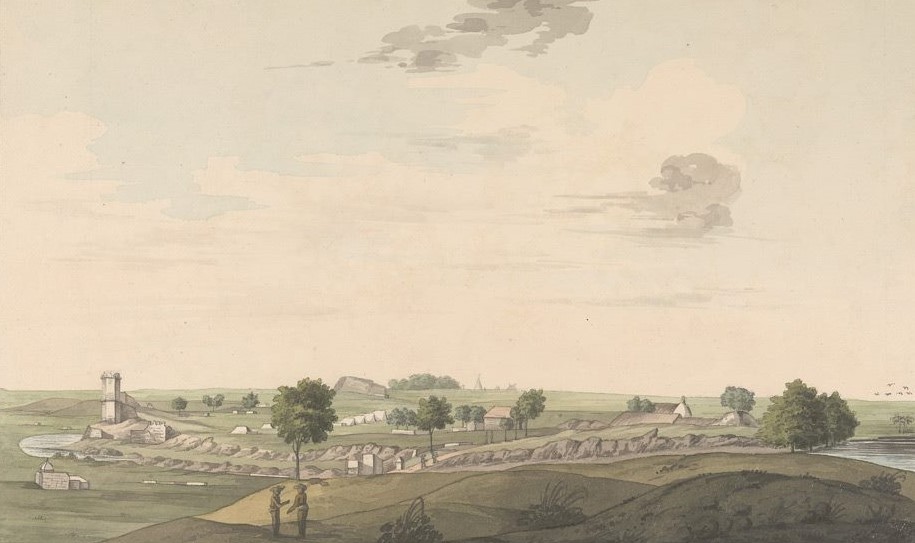
Thavasumuthu Nadar approached the Maharaja of Travancore and requested permission to start liquor distilleries there, since Nadar estate had earned good reputation in the liquor trade, he was awarded a contract to supply liquor throughout the entire Kingdom of Travancore. He also obtained contracts for supplying toddy for various regions in Travancore, and later for the Kingdom of Cochin. [4]
Thavsumuthu Nadar built distilleries in Vaikom, Kanandevi Hills, Nagarkovil and Devikulam and started to manufacture and supply liquor to Travancore and Cochin. [5]
-
Nadar estate – The biggest distillers of South India for a century
From their first Abkari contract in 1830, the Nadar estate rise up to become the biggest distillers of South India for a century, operating several monopolies in various districts of Madras Presidency (Madras Presidency included most of southern India, including the whole of Tamil Nadu and Andhra Pradesh, and parts of Odisha, Kerala and Karnataka), the Kingdom of Travancore and the Kingdom of Cochin. [6]
Between 1830-1920s, the Poraiyar Nadar estate frequently secured contracts (monopolist) to manufacture and supply liquor for the following regions [7]:
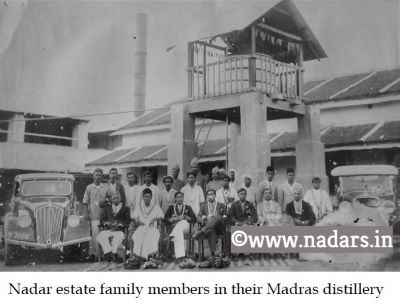
- Madras town area
- Madura District (covers the present-day districts of Madurai, Dindigul, Theni, Ramanathapuram, Sivagangai & parts of Virudhunagar District)
- Trichinopoly District (covers the present-day districts of Tiruchirappalli, Karur, Ariyalur and Perambalur)
- Tirunelveli District (covers the present-day districts of Tirunelveli, Thoothukudi, Tenkasi and few parts of Virudhunagar)
- Chingleput District (covers the present-day districts of Kanchipuram, Chengalpattu and Tiruvallur and parts of Chennai city)
- East Godivari District
- Ramnad
- North Arcot (covers the present-day districts of Chittoor, Tiruvannamalai, Vellore, Tirupattur and Ranipet)
- Rayagada District (Odisha)
- South Canara District (covers the present-day districts of Dakshina Kannada and Udupi of Karnataka and the Kasaragod District of Kerala)
- Coimbatore District (for a small stint) (covers the present-day districts of Coimbatore, Erode and Tirupur)
Nadar Estate built distillery factories in: [8]
- Madras (Tamil Nadu)
- Thachanallur (Tirunelveli, Tamil Nadu)
- Nagercoil (Tamil Nadu)
- Renigunta (Andhra Pradesh)
- Bhadrachalam (Telangana)
- Vaikom (Kerala)
- Kanandevi Hills (Kerala)
- Trichur (Kerala)
- Devikulam (Kerala)
- Jeypore (Odisha)
Warehouses were in Madras, Trivandrum, Nellore, Conjeevaram, Vellore, Mayavaram, Trichinopoly, Madurai, Calicut, Mangalore etc.
In the meantime, the Danish East India Company in Tranquebar never generated much profit after the year 1800, it gradually lost importance as a centre of trade due to tough competition from the rapid expansion of British power. In 1845, Tranquebar was sold for a minor sum to the British.
British East India Company auctioned the Danish’s ships, Vellaiyan Nadar bought 2 Ships for 40,000 rupees (then a princely sum) in that auction, which makes him the first person from Nadar community to own a ship.
He renamed the ships as Mahalaxmi and Bhagyalaxmi [9]. Later, Vellaiyan bought another ship (Puhar Moideen) from a Muslim trader from Poompuhar.
The Nadar Estate’s merchant ships sailed across Southeast Asia.
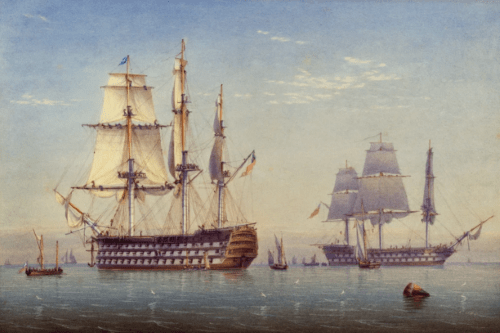
Soon, the Nadars ventured into salt trade, they owed several acres of salt pans in Nagapattinam. [10]
Meanwhile, Vellaiyan Nadar had a second son, he named him Ponnusamy (Later, Ponnusamy Nadar became the first President of Nadar Mahajana Sangam).
When the Danish first came to Tranquebar, the Governor of the Danish colony of Tranquebar built a mansion midst a garden at the centre of the Poraiyar town. Governor’s garden, as they named it, was a pleasure garden, where the Danes used to come and disport themselves. It was a 7-acre land with the building in the middle surrounded by a garden and a pond.
In 1865, the British decided to sell the place and Vellayan Nadar bought it for £ 1,000. [11]
Vellaya Nadar renovated the mansion and constructed extra wings as per his interest since the house was previously owned by the Danish East India Company & British East India Company, he named the mansion as “Company’s Garden” and gifted it to his son Thavsumuthu Nadar.
Company’s Garden became the official residence of Nadar Estate.
In 1882, Thavasumuthu Nadar bought the Ariyalur Zamindari in the court auction and became the Zamindar of Ariyalur. [12] He was the first Zamindar from the Nadar community (To read more about Ariyalur Zamindari, click here)
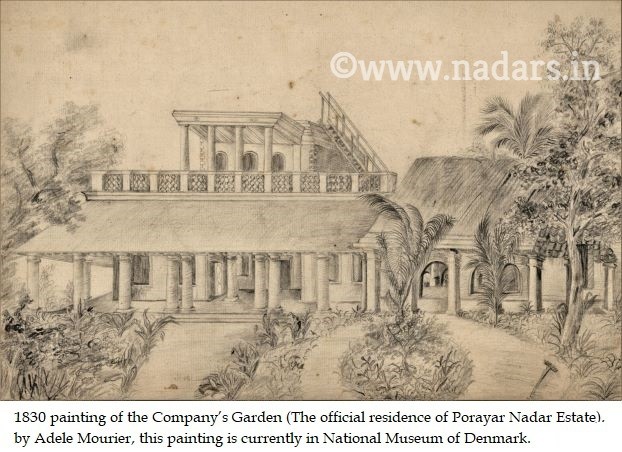
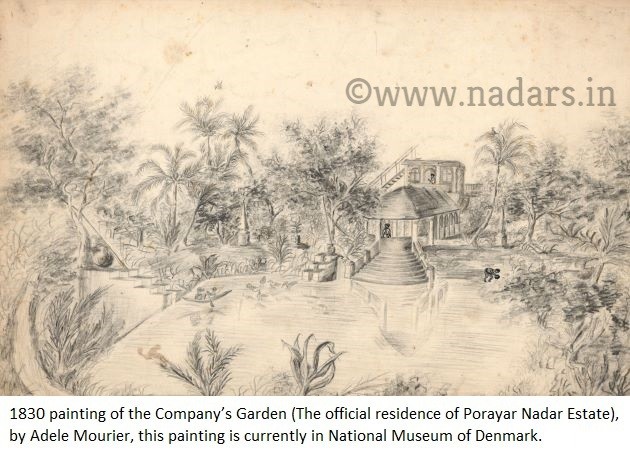


-
Thavsumuthu Nadar with King Edward VII
In October 1875, Queen Victoria’s eldest son, His Royal Highness Albert Edward, Prince of Wales (Albert Edward (Edward VII) became the King of British Empire in 1901), boarded HMS Serapis and made a passage to India. As with earlier major royal tours he had undertaken – one to Canada and the United States, another to Egypt and the Middle East – this trip was to strengthen diplomatic links but also enable the heir apparent to learn more about a country he would one day rule.
In the course of his four-month trip, the prince travelled by boat, rail, carriage and elephant to all corners of the Indian subcontinent. He visited more than 21 towns and cities in modern-day India, Pakistan, Nepal and Sri Lanka and was guest at more than 90 royal courts.
On 11th of December 1875, the Prince of Wales, Edward reached Trichinopoly (Tiruchchirapalli).
Since the Prince has cancelled his Tanjore visit, the deputation of Tanjore was present in Trichinopoly to meet the Prince. Collector Mr Henry Sullivan Thomas, a close associate of Nadar estate, introduced Zamindar Thavsumuthu Nadar to the His Royal Highness, Prince Edward.[13]
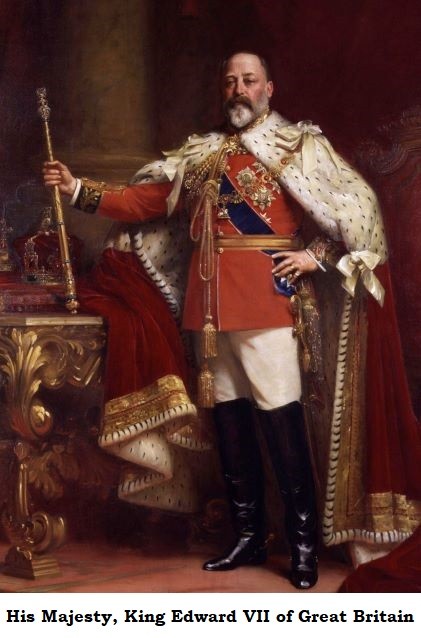
From Tiruchchirappalli, the Prince went to nearby towns including Srirangam temple.
(Allegedly, verbal accounts of Prince’s Tiruchchirappalli visit state that Prince Edward went to Vallam and stayed in the Nadar Estate’s Vallam Palace which was the collector’s official residence).
Vellaiya Nadar died at the age of 85, on November 1876. Vellaiya Nadar, hail from a very humble background, clawed his way to up as the wealthiest man in the Madras Province. [14]
Thavsumuthu Nadar took charge of the Nadar Estate.
Thavsumuthu Nadar published a magazine in 1880 from Karaikal, it was named “Sathyabhimaani”, renowned Srilankan Tamil author, A Muthuthambipillai (1858-1917) was the editor for this Magazine. [15]
Thavasumuthu Nadar started a school to cater to the educational needs of the people in the Tanjore region. The school was opened in 1882 under the name “Thavasumuthu Nadar School”. [16]

-
The tradition of “Ilai sooru” (இலை சோறு)
In those days, several royal houses of South India followed “Ilai sooru” tradition.
Ilai sooru is a culture in which, people on their own interest, eat remains of the food the member of the distinguished royal family.
During the period of Thavsumuthu Nadar, the Nadar Estate family raised up to such honour that people, of various caste and religion, considered as blessing and pride to eat Ilai sooru in Porayar Nadar Estate’s family houses.
This tradition continued till 1939 in the Poraiyar Nadar family. [17]
Note: This is not an act of enslavement or disrespect. Do not judge such practices, like various other Indian traditions and habits which has creased now, Ilai sooru was one such tradition.

-
Poraiyar Nadar’s support to the Government
Like many aristocrats those days, the Nadar estate believed that the governance of the British in India was then needed for the economic developments, the legal and administrative system.
The Nadar House at Tranquebar
When the British wanted to move Tanjore’s District and Sessions Court to Tranquebar, Thavsumuthu Nadar gave his house for the government to use as a court. In 1878, when the Court was transferred to Tanjore, the house was richly furnished and artistically decorated by the Nadar and used this as a guest house for British Governors and Collectors.
When His Excellency Lord Ampthill and Lady Ampthill, the Viceroy of India, visited Tranquebar, they stayed as the guest of Poraiyar Nadar Estate family in this house. [18]

The Vallam Palace
Thavsumuthu Nadar built a palace in Vallam (Tanjore District) in 1872, the British Collectors of Tanjore lived in the palace of Nadar estate and it remained as the official residence of the Collectors of Tanjore District for more than fifty years. [19]
Whenever the Governor of Madras visits Tanjore District, he stays in the Nadar estate’s Vallam Palace. [20]
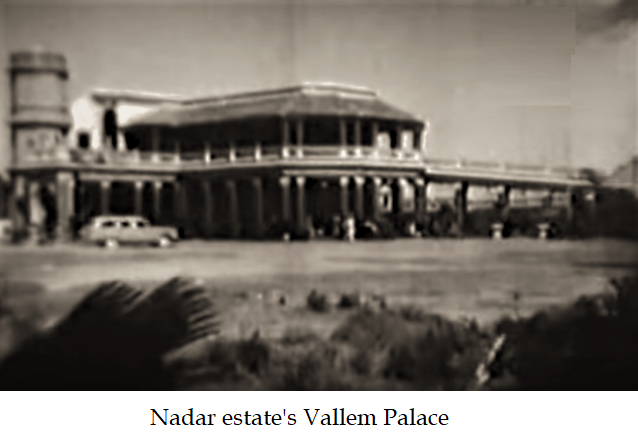
Buildings for government’s use
Earlier, Vellaiya Nadar donated his Tanjore Bungalow to the British government when they wanted to build a railway station in Tanjore, the Bungalow which was in the southern entrance of the station, was used as railway hospital by the British.
English Club in Tanjore town and Chingleput Sub-collector’s office were also operated in the buildings of Nadar estate. [21]
Financial support to the Congress Party
The oldest national party in India, Indian National Congress, was established in 1885 as a pro-British Indian organization.
In its initial days, the party was not formed to demand independence from British rule. It was rather set up to bring together a group of educated individuals on a common platform to influence policy-making.
Since Congress’s inception in 1885 to early 1890s, the Poraiyar Nadar estate family was one of the major financiers of the Congress in Madras. [22]
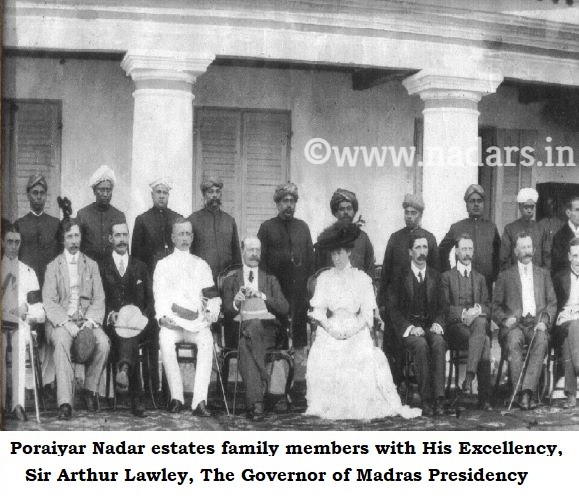

Thavsumuthu Nadar’s vast dream of expanding his empire through the transfer of knowledge to his descendants came to a dangerous halt due to the cause of his early death. Thavsumuthu Nadar died in 1885 in Tanjore at the age of 55.
Thavsumuthu Nadar had three sons:
- T. Rathinasamy Nadar 1865 – 1912
- T. Vellaithambi Nadar
- T. Gurusamy Nadar
The management of entire Nadar estate fell on the shoulders of very young, inexperienced T. Rathnasamy Nadar who was just 19 years old.
Unlike his father, Rathnasamy Nadar was less involved in business and showed more interest in the politics and upliftment of the Nadar community.
Rathnaswamy Nadar established the first-ever Sangam for Nadar community, Nadar Mahajana Sangam (For more details about Nadar Mahajana Sangam and its range of interests, check this page). During his period, the Poraiyar Nadar estate family fought for the rights of Nadars in the temple and succeeded it by becoming the first Nadar to enter a temple committee (For more details about this, check this page). Rathnaswamy Nadar also played a vital role in the development of Tranquebar region by bringing in the railway line for the town (For more details about this, check this page). The Nadar estate lost much of its wealth and fell heavily in debt due to Rathinasamy Nadar’s such public welfare activities.
British government awarded “Rao Bahadur” award to Rathinasamy Nadar recognizing his services for the society. [23]
T. Rathinasamy Nadar died in 1912 at the age of 47.
Thavsumuthu Nadar’s second son Vellaithambi Nadar who was involved in the maintenance of estate properties and revenues also died in 1907. Hence, Thavsumuthu Nadar’s third son T. Guruswamy Nadar took over the management of the entire Nadar estate as well as Zamindar title from 1912.
Since he was the only senior of the Nadar estate family, he had to strive hard to manage the estate and businesses.

The Zamindar of Ariyalur, Guruswamy Nadar managed the business with great care and attention like his predecessors and secured the abkari contracts for a greater portion of South India.
-
First World War and its impact on Nadar estate
The First World War created chaos in both the political and economic situation of India. The war operations in British imbibed huge amounts of basic commodities from India. Demand for food supplies led to rampant food inflation.
Meanwhile, the Nadar estate was the biggest distiller in South India, held the monopoly to supply liquor to almost 70% of South India, including the districts of Madras, Chingleput, Madurai, Ramnad, Tirunelveli and Kingdom of Travancore and Cochin.[24]
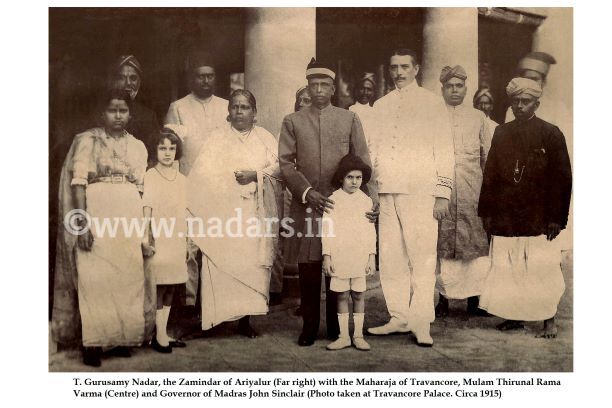
On 1917, Zamindar T. Guruswami Nadar had concluded contracts to supply liquor at a fixed price for a three-year period for these districts, but the price of the raw material rocketed in the post-war economic chaos [14]. By late 1920 it stood at more than double the price it had been when the contracts were fixed, the Nadar estate lost a rupee and four annas on each gallon of liquor they made! [25]
The government recognized this and provided a compensation of Rs. 2,15,000 (then a princely sum). But the loss was relatively very high! The Nadar estate went almost bankrupt.[26]
Guruswami Nadar received this compensation in November of 1920. He had an appointment with the Governor of Madras the next day, to thank him for the compensation and discuss the next term’s contracts. But unfortunately, but on the night, he had a severe heart attack and passed away.
The management of entire Nadar estate fell on the shoulders of young, T.V. Balaguruswami Nadar. He was the son of T. Vellaithambi Nadar (2nd son of V. Thavsumuthu Nadar).
-
T.V. Balagurusamy Nadar with the King Edward VIII
The Prince of Wales, Edward (later King Edward VIII of British Empire) toured India from October 1921 to March 1922.
On January 13, 1922, the Prince landed in Madras where he spent 4 days. A party was held in the government house for the Prince in which the British officials and the elite of the Indian crowd including Princes and Zamindars attended.
Zamindar of Ariyalur, T.V. Balagurusamy Nadar was also present in the occasion, on behalf of Poraiyar Nadar Estate, Balagurusamy Nadar presented a golden sceptre ornamented with emeralds as a gift to the Prince.

T.V. Balaguruswami Nadar was just 24 years old when he took over the management of Nadar estate.
T.V. Balaguruswami Nadar tried his best to solve the crisis, but by that time, the situation of Nadar estate was so involved!
In 1921, the Nadar estate could only sustain its monopoly for the Kingdom of Travancore and Cochin and a very few districts from South India. It had lost several districts to its competitors.
This loss created chaos in the Poraiyar Nadar estate’s family, the sons of T. Rathinaswamy Nadar & T. Guruswamy Nadar filed a suit against the T. Vellaithambi Nadar’ sons (T.V. Balaguruswami Nadar and his brothers) demanding partition.
The court-appointed receivers to manage the Nadar estate, who managed the estate for almost 20 years. During this time, the Nadar estate had lost all their abkari contracts.
T.V. Balaguruswami Nadar was widely blamed for Nadar Estate’s fall (even though the Nadar estate was heavily in debt prior to his management). Unable to accept such accusation, T.V. Balaguruswami Nadar died on tragic circumstances on 5th July 1929 at his residence Company’s garden!

On the 30th July 1937, the Court directed that the immovable properties comprising the estate should be sold at an auction at which the members of the three branches of Thavasamuthu Nadar’s family alone should have the right to bid. In other words, there should be a private, not a public auction. This private auction took place in September 1937. This auction favoured the members of the family as they could win their rightful shares of the estate’s remaining properties. The conflicts between the family members settled.
Following that, the families of Poraiyar Nadar estate reunited maintained a good relationship with each other, several inter-family marriages took place in order to keep the family united.


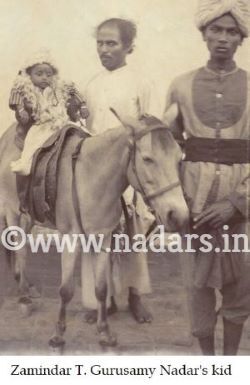

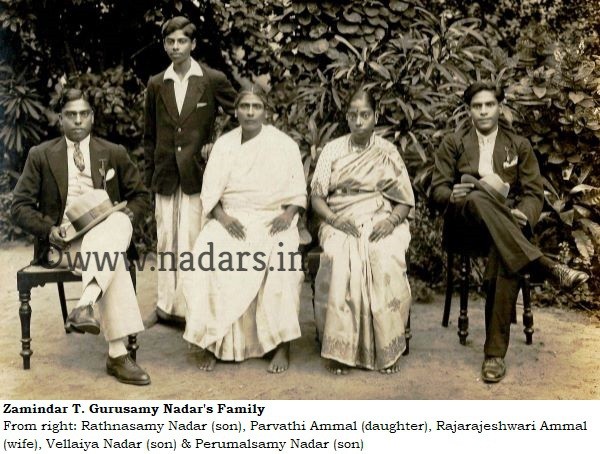
References
[2] Various year’s “Report on the Administration of the Excise Revenue in the Presidency of Fort Saint George” | List of business carried on behalf of the family, listed under Schedule III in Civil suit no 655 of 1921 | Page 1478, Thackers Indian Dictionary Including Burma And Ceylon(1937-38)
[3] The will of Mr. P. Vellaiya Nadar, registered in Tranquebar sub-registers office on 11, March 1876 | List of immovable properties listed on Schedule II of Civil suit no 655 of 1921
[4] Page 302, The decline of Nayar dominance – society and politics in Travancore 1847-1908
[5] List of immovable properties listed on Schedule II (Part II) of Civil suit no 655 of 1921
[6] Page 1478, Thackers Indian Dictionary Including Burma And Ceylon(1937-38) | Various year’s “Report on the Administration of the Excise Revenue in the Presidency of Fort Saint George”
[7] Various year’s “Report on the Administration of the Excise Revenue in the Presidency of Fort Saint George” | List of business carried on behalf of the family, listed under Schedule III in Civil suit no 655 of 1921
[8] Page 237, Report on the quality manufacture & excise-control of alcoholic liquors in India | List of immovable properties listed on Civil suit no 655 of 1921
[9] Page 822, The Asylum Press Almanac And Compendium Of Intelligence For 1883 | Page 742, The Asylum Press Almanac And Compendium Of Intelligence For 1881 | The will of Mr. P. Vellaiya Nadar, registered in Tranquebar sub-registers office on 11, March 1876
[10] Page 115, The Emergence of Provincial Politics – The Madras Presidency 1870—1920 By D. A. Washbrook
[11] Page 468, Mission Life: Or Home and Foreign Church Work, Volume 6 by Rev. J.J. Halcombe
[12] Page 1595, The Asylum Press’s Almanack and Directory of Madras and Southern India 1919 | Page 146, Madras District Gazetteers: Statistical Appendix for Trichinopoly District
[13] Page 280, The Prince of Wales’ tour: a diary in India; with some account of the visits of His Royal Highness to the courts of Greece, Egypt, Spain and Portugal (1877) by Russell, William Howard
[14] Page 466, Mission Life: Or Home and Foreign Church Work, Volume 6 by Rev. J.J. Halcombe.
[15] Page 188, Critical study of Nannul and its commentaries by Ka. Pa Aravanan
[16] Page 201, Statistical Appendix And Supplement To The Revised District Manual (1906) For Tanjore District
[17] Mahajanam Magazine, 15, June 1969
[18] The Fourth and Fifth Tours of His Excellency Lord Ampthill, In The Madras Presidency Printed By The Superintendent, Government Press
[19] Page 280, Tanjore District Gazetteers by FR. Hemingway 1906 | Page 64, South India Political Institutions and Political Change 1880–1940 by C. J. Baker, D. A. Washbrook
[20] The Fourth and Fifth Tours of His Excellency Lord Ampthill, In The Madras Presidency Printed By The Superintendent, Government Press
[21] List of immovable properties listed on Civil suit no 655 of 1921
[22] Page 178 and 200, South India Political Institutions and Political Change 1880–1940 by C. J. Baker, D. A. Washbrook
[23] Page 364, The Historical Record of The Imperial Visit to India-1911 by John Murray, London | Page 113, Who’s who in India (lives and photographs of the recipients of honors on 12th December 1911)
[24] Page 142, South India Political Institutions and Political Change 1880–1940 by C. J. Baker, D. A. Washbrook
[25] Page 106, South India Political Institutions and Political Change 1880–1940 by C. J. Baker, D. A. Washbrook
[26] List of Movable properties listed in the Schedule II of Civil suit no 655 of 1921 | Page 142, South India Political Institutions and Political Change 1880–1940 by C. J. Baker, D. A. Washbrook
Comments 10
May 26, 2021 at 11:27 am
An ocean of information well put together.More required on the 20 th century especially photos of these
pioneers,their houses and family.There was a beautifull Rolls Royce in 1960 's parked in the Companys Garden.
Also a magical pond,where a silver vessel would mysterically appear on the surface in the afternoon hours and then dissappear
before anyone could grab the treasure.This information was what was passed onto me by my grandfather Thiru V.Kanagasabai
Nadar.
May 28, 2021 at 10:02 am
Thank you for your kind words! We ll soon add a Gallery Page in the website with more photos, as we are in the process of collecting the same!
February 21, 2022 at 2:27 pm
Great effort
February 21, 2022 at 2:30 pm
Great effort would like to visit the place know more about porayar family and history
May 15, 2022 at 3:03 am
Thank you! You are always welcome..
October 20, 2022 at 9:52 am
There is a huge connection between the Chola Empire and the Nadars as they both had Ship sailed across the South East Asia. Nadars are so business oriented and gave so much importance to Education. In those days they have opened hospitals for the needy all over the region. They had distillery business all over South India. Vellaiya Nadar the wealth in the Madras Province which is the whole of South India. An amazing Dynasty. Starting from Herodotus the Greek Historian and Writer who wrote 1000 years ago about the intelligence, trade skills, warrior skills of the Nadars. I believe the British Government should Nominate the Nadar Dynasty as the Chola and the Pandyan Dynasty.
October 26, 2022 at 8:21 am
Great reading . Someone has taken the huge effort to put this all up . Congrats . The photos need to be set up where they can be pinched to enlarge . Some of them are not . Please check . There are grammatical errors in many places . This needs proper editing .
Please explain the tragic circumstances in which TV Balaguru Nadar died . I think you need to list out the present descendants too and what they are up to .
Fantastic Job . Can’t wait to visit the porayar estate house after the renovation .
February 12, 2023 at 10:36 pm
Great leader Guru Swaminarayan
May 4, 2023 at 7:33 am
Nadars are an Aristocratic race
October 8, 2023 at 10:35 am
But Nadar estate bought Vanniyar Kshatriya Padayatchi Mazhavarayar Zamindar of Ariyalur. Mazhavarayar dynasty was ancient family related to Pazhuvettarayar and the Chera princes of Kerala